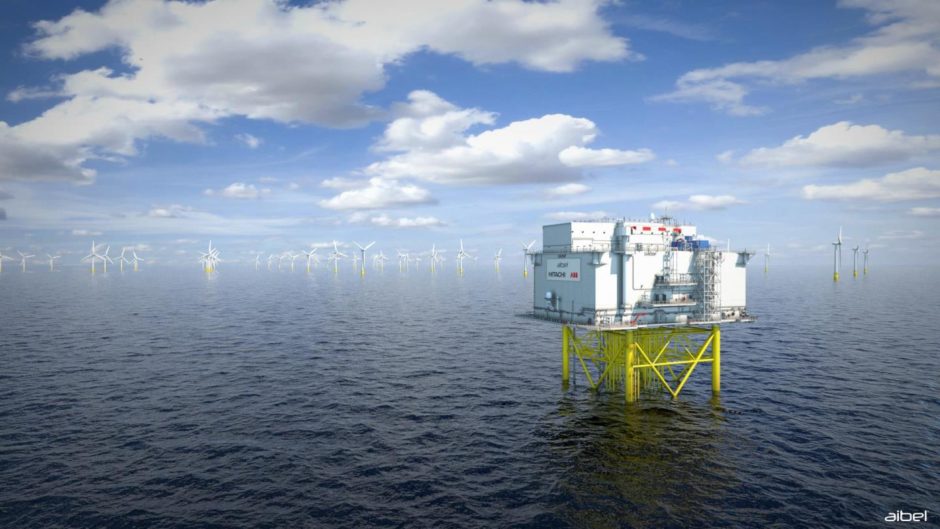
Dogger Bank Wind Farm has unveiled a “revolutionary platform design” that will deliver a 70% reduction in the weight of its topsides.
The High Voltage Direct Current (HVDC) offshore substation, which the developers have hailed as the “world’s first”, will become the largest of its kind at 1.2 gigawatts (GW) when its installed as part of the first phase of the project in 2023.
The development will be the first offshore wind project in the UK to use HVDC to transmit the electricity produced back to shore.
The technology allows the power generated to be transmitted efficiently over long distances while minimising losses.
Working closely with platform manufacturer Aibel, the Dogger Bank team were challenged to design the first unmanned offshore HVDC substation in the world.
By removing the need for workers to stay on the structure, developers were able to axe the living quarters, helideck and sewage systems, resulting in a 70% reduction in weight per megawatt of the topside compared to previous installations.
It is also expected to save hundreds of millions of pounds and could be used in future HVDC projects of similar transmission capacity.
Dogger Bank, which will be the world’s largest wind farm upon completion, is currently under construction in the North Sea, around 80 miles off the Yorkshire coast.
Due to its size, it’s being built in three stages and, when complete in 2026, it will be able to meet about 5% of the UK’s electricity demand.
The first two phases of the project are a joint venture between SSE Renewables, Equinor and Eni, with the former leading on construction and delivery.
Dogger Bank C is a 50:50 joint venture between SSE Renewables and Equinor, which will operate the complete wind farm for its lifetime of up to 35 years.
Steve Wilson, project director of Dogger Bank, said: “We’ve committed to build this project with record low CfD strike prices and the associated benefits this provides to UK electricity consumers.
“We will do this by using the latest technologies to ensure we build and operate the wind farm efficiently, while achieving the highest standards in safety.
“In order to build this complex infrastructure project competitively, whilst introducing a new technical solution here in the UK, the Dogger Bank project team needed to drive a huge step change in design.”
Jon Kippenes, offshore platform manager for Dogger Bank, who used his experience from years of working in oil and gas to drive forward the solution, said: “Traditional methods have been effective at transmitting electricity from wind farms that are closer to shore, but with Dogger Bank being so far from shore, we chose to use HVDC as it is much more efficient to transfer electricity over long distances.
“As the first project to do this in the UK we were faced with potentially high costs and uncertainty, but by taking learnings from unmanned installation in Oil and Gas, and working closely with our supplier we have designed an innovative and safe platform with huge reductions in weight.
“This of course lowers the cost for this project, but also sets a new standard for offshore HVDC platforms. The Dogger Bank transmission concept was turned from being the project’s Achilles heel into a competitive edge.”
Recommended for you

